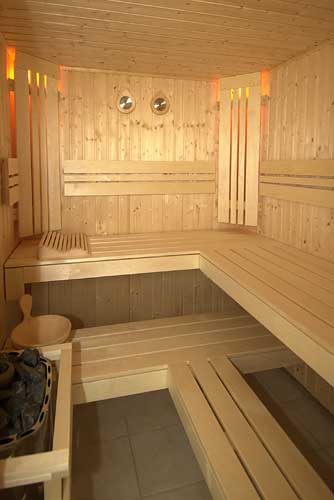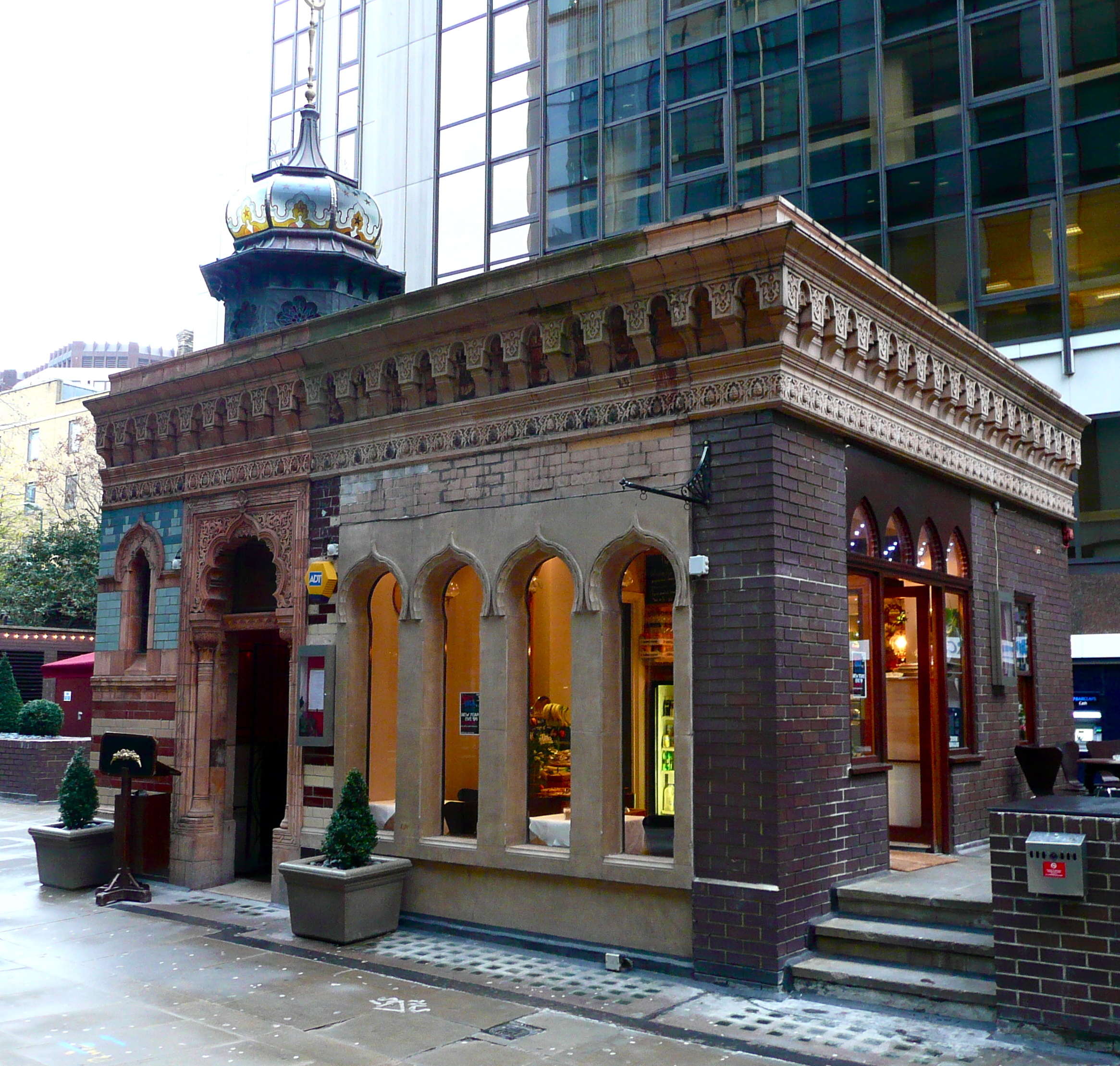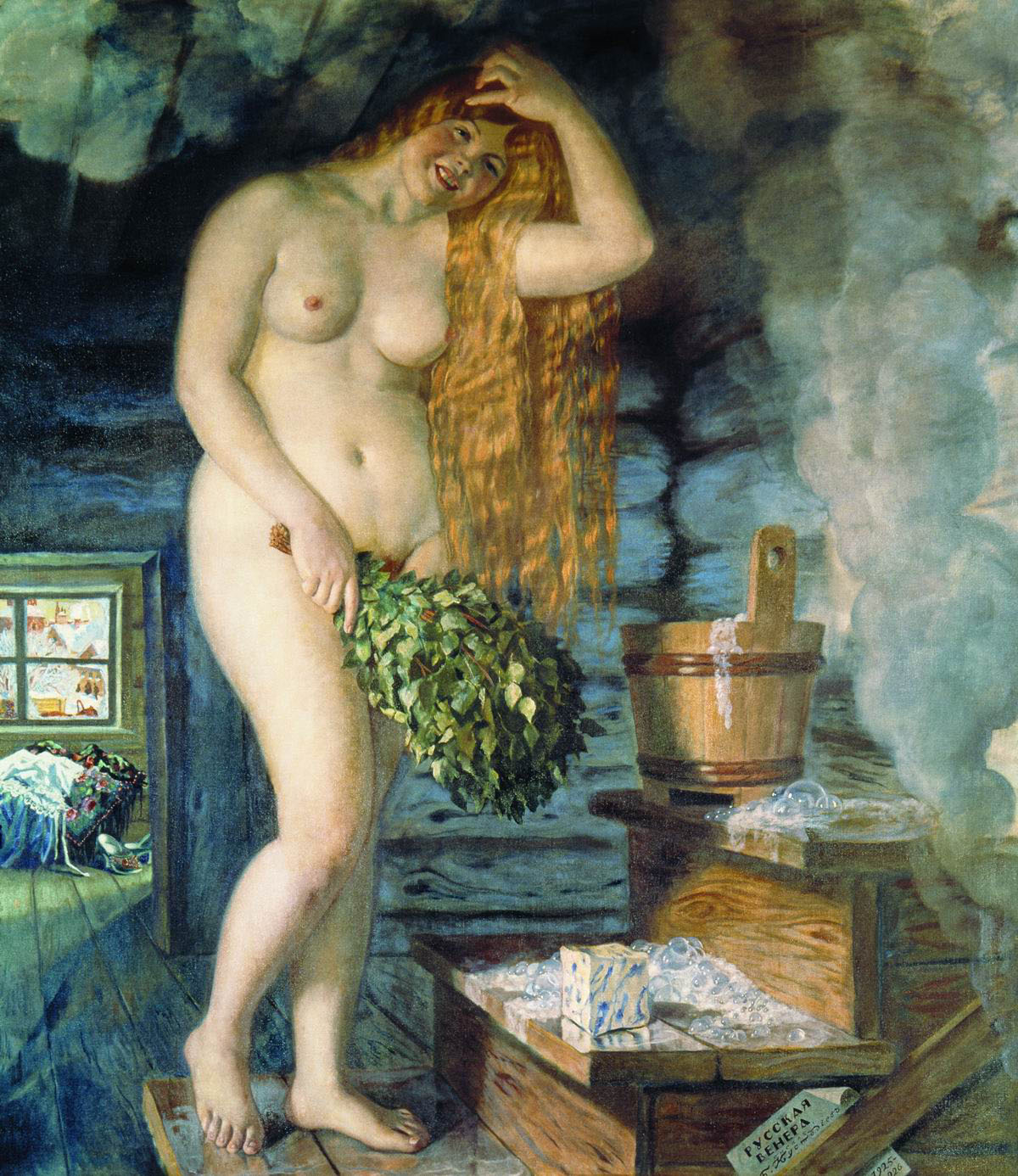|
Steambath
A steam bath is a steam-filled room for the purpose of relaxation and cleansing. It has a long history, going back to Greek and Roman times. History The origins of the steam bath come from the Roman bath, which began during the height of the Roman Empire. Ancient Roman baths served many community and social functions within Roman society. Many citizens in Rome used Roman public baths, regardless of socioeconomic status. These Roman baths were supplied by natural hot springs from beneath the ground. Archaeological works at the monastic complex in the Makurian city of Hambukol, has revealed the possible use of one of its rooms as a steam bath. Historical parts of a spa – Roman, medieval, Georgian and Victorian have been restored in Bath, England and is available as a public bath or Thermae. Modern steam baths Today, natural steam baths still exist, and often still use similar systems that the Romans used, which contain pipes and pumps that bring water up and into the large p ... [...More Info...] [...Related Items...] OR: [Wikipedia] [Google] [Baidu] |
Sauna
A sauna (, ), or sudatory, is a small room or building designed as a place to experience dry or wet heat sessions, or an establishment with one or more of these facilities. The steam and high heat make the bathers perspire. A thermometer in a sauna is typically used to measure temperature; a hygrometer can be used to measure levels of humidity or steam. Infrared therapy is often referred to as a type of sauna, but according to the Finnish sauna organisations, infrared is not a sauna. History The oldest known saunas in Finland were made from pits dug in a slope in the ground and primarily used as dwellings in winter. The sauna featured a fireplace where stones were heated to a high temperature. Water was thrown on the hot stones to produce steam and to give a sensation of increased heat. This would raise the apparent temperature so high that people could take off their clothes. The first Finnish saunas were always of a type now called ''savusauna''; "smoke sauna". These diffe ... [...More Info...] [...Related Items...] OR: [Wikipedia] [Google] [Baidu] |
Steam Shower
A steam shower is a type of bathing where a humidifying steam generator produces water vapor that is dispersed around a person's body. A steam shower is essentially a steam room that offers the typical features of a bathroom shower. Steam showers are generally found in self-contained enclosures that prevent the water vapour from escaping into the rest of the room, avoiding damage to drywall, paint, or wallpaper. Steam showers combine the functionality of a standard steam room with many additional features including a shower, FM radio and hydrotherapy. Steam showers are available in a variety of materials, including tile, acrylic, fiberglass, glass, stone, and wood. History Steam showers have evolved from the steambath which is thought to have been invented during the height of the Roman Empire. Ancient Roman baths served many community and social functions within Roman society. These Roman baths were supplied by natural hot springs from beneath the ground. Features A steam shower ... [...More Info...] [...Related Items...] OR: [Wikipedia] [Google] [Baidu] |
Sauna
A sauna (, ), or sudatory, is a small room or building designed as a place to experience dry or wet heat sessions, or an establishment with one or more of these facilities. The steam and high heat make the bathers perspire. A thermometer in a sauna is typically used to measure temperature; a hygrometer can be used to measure levels of humidity or steam. Infrared therapy is often referred to as a type of sauna, but according to the Finnish sauna organisations, infrared is not a sauna. History The oldest known saunas in Finland were made from pits dug in a slope in the ground and primarily used as dwellings in winter. The sauna featured a fireplace where stones were heated to a high temperature. Water was thrown on the hot stones to produce steam and to give a sensation of increased heat. This would raise the apparent temperature so high that people could take off their clothes. The first Finnish saunas were always of a type now called ''savusauna''; "smoke sauna". These diffe ... [...More Info...] [...Related Items...] OR: [Wikipedia] [Google] [Baidu] |
Thermae
In ancient Rome, (from Greek , "hot") and (from Greek ) were facilities for bathing. usually refers to the large Roman Empire, imperial public bath, bath complexes, while were smaller-scale facilities, public or private, that existed in great numbers throughout Rome. Most Roman cities had at least one – if not many – such buildings, which were centers not only for bathing, but socializing and reading as well. Bathhouses were also provided for wealthy private Roman villa, villas, domus, town houses, and castra, forts. They were supplied with water from an adjacent river or stream, or within cities by aqueduct (watercourse), aqueduct. The water would be heated by fire then channelled into the caldarium (hot bathing room). The design of baths is discussed by Vitruvius in ''De architectura'(V.10) Terminology '','' '','' '','' and may all be translated as 'bath' or 'baths', though Latin sources distinguish among these terms. or , derived from the Greek language, G ... [...More Info...] [...Related Items...] OR: [Wikipedia] [Google] [Baidu] |
Public Bathing
Public baths originated when most people in population centers did not have access to private bathing facilities. Though termed "public", they have often been restricted according to gender, religious affiliation, personal membership, and other criteria. In addition to their hygienic function, public baths have also been social meeting places. They have included saunas, massages, and other relaxation therapies, as are found in modern day spas. As the percentage of dwellings containing private bathrooms has increased in some societies, the need for public baths has diminished, and they are now almost exclusively used recreationally. History Public facilities for bathing were constructed, as excavations have provided evidence for, in the 3rd millennium BC, as with the Great Bath, Mohenjo-daro. Ancient Greece In Greece by the sixth century BC men and women washed in basins near places of physical and intellectual exercise. Later gymnasia had indoor basins set overhead, the open ... [...More Info...] [...Related Items...] OR: [Wikipedia] [Google] [Baidu] |
Victorian Turkish Bath
Victorian Turkish bath or simply Turkish bath (though not to be confused with the traditional baths in Turkey and the Ottoman Empire) is a type of public bathhouse which was derived from the ''hammam'' (bathhouse) of the Islamic world and those Roman baths which used hot dry air. It became popular as a therapy, a method of cleansing, and a place for relaxation during the Victorian era, rapidly spreading through the British Empire, the United States of America, and Western Europe. Description Unlike Russian saunas (''banya''), which use steam, Victorian Turkish baths focus on air. The particular bathing process roughly parallels ancient Roman bathing practices. It starts with relaxation in a room heated by a continuous flow of hot, dry air, allowing the bather to perspire freely. Bathers may then move to an even hotter room before they wash in cold water. After performing a full body wash and receiving a massage, bathers finally retire to the cooling-room for a period of relaxa ... [...More Info...] [...Related Items...] OR: [Wikipedia] [Google] [Baidu] |
Banya (sauna)
A ''banya'' ( rus, баня, p=ˈbanʲə, a=Ru-баня.ogg) is originally a Russian steam bath with a wood stove. It is considered an important part of Russian culture. The bath takes place in a small room or building designed for dry or wet heat sessions. The steam and high heat make the bathers perspire. Genders were traditionally segregated in the ''banya'', with separate rooms for the sexes. In the Russian language, the word ''banya'' may also refer to a public bathhouse, the most historically famous being the Sanduny (''Sandunovskie bani''). History A mention of the ''banya'' is found in the ''Radziwiłł Chronicle'' in the story of Princess Olga's revenge for the murder of her husband, Prince Igor, by the Slavic tribe of Drevlians in 945 AD. The leader of the Drevlians had hopes of marrying the widow Olga and sent messengers to discuss the idea. "When the Drevlians arrived, Olga commanded that a bath should be made ready for them and said, 'Wash yourselves and come to ... [...More Info...] [...Related Items...] OR: [Wikipedia] [Google] [Baidu] |
Hammam
A hammam ( ar, حمّام, translit=ḥammām, tr, hamam) or Turkish bath is a type of steam bath or a place of public bathing associated with the Islamic world. It is a prominent feature in the culture of the Muslim world and was inherited from the model of the Roman ''thermae.'' Muslim bathhouses or hammams were historically found across the Middle East, North Africa, al-Andalus (Islamic Spain and Portugal), Central Asia, the Indian subcontinent, and in Southeastern Europe under Ottoman rule. A variation on the Muslim bathhouse, the Victorian Turkish bath, became popular as a form of therapy, a method of cleansing, and a place for relaxation during the Victorian era, rapidly spreading through the British Empire, the United States of America, and Western Europe. In Islamic cultures the significance of the hammam was both religious and civic: it provided for the needs of ritual ablutions but also provided for general hygiene in an era before private plumbing and served other ... [...More Info...] [...Related Items...] OR: [Wikipedia] [Google] [Baidu] |
Gamla Gufubaðið á Laugarvatni Séð Að Innan
Gamla, alt. sp. Gamala ( he, גַּמְלָא, The Camel) was an ancient Jewish city on the Golan Heights. It is believed to have been founded as a Seleucid fort during the Syrian Wars which was turned into a city under Hasmonean dynasty, Hasmonean rule in 81 BCE. During the First Jewish–Roman War, Great Revolt, it became an important stronghold for rebels and because of this Gamla is a symbol for the modern state of Israel and an important historical and archaeological site. It lies within the current Gamla nature reserve and is a prominent tourist attraction. History Situated at the southern part of the Golan, overlooking the Sea of Galilee, Gamla was built on a steep hill shaped like a camel's hump, from which it derives its name (''Gamla'' meaning 'the camel' in Aramaic). Early history Archaeological excavations have shown that in the place of Gamla there was already a settlement in the Early Bronze Age. The settlement was probably agricultural, as archaeologists have f ... [...More Info...] [...Related Items...] OR: [Wikipedia] [Google] [Baidu] |
Makurian
Makuria (Old Nubian: , ''Dotawo''; gr, Μακουρία, Makouria; ar, المقرة, al-Muqurra) was a Nubian kingdom located in what is today Northern Sudan and Southern Egypt. Makuria originally covered the area along the Nile River from the Third Cataract to somewhere south of Abu Hamad as well as parts of northern Kordofan. Its capital was Dongola (Old Nubian: '), and the kingdom is sometimes known by the name of its capital. By the end of the 6th century, it had converted to Christianity, but in the 7th century, Egypt was conquered by the Islamic armies. In 651 an Arab army invaded, but it was repulsed and a treaty known as the ''Baqt'' was signed creating a relative peace between the two sides that lasted until the 13th century. Makuria expanded by annexing its northern neighbour Nobatia at some point in the seventh century, while also maintaining close dynastic ties with the kingdom of Alodia to the south. The period from the 9th to 11th century saw the peak of Makuria' ... [...More Info...] [...Related Items...] OR: [Wikipedia] [Google] [Baidu] |
Bath, England
Bath () is a city in the Bath and North East Somerset unitary area in the ceremonial counties of England, county of Somerset, England, known for and named after its Roman Baths (Bath), Roman-built baths. At the 2021 Census, the population was 101,557. Bath is in the valley of the River Avon (Bristol), River Avon, west of London and southeast of Bristol. The city became a World Heritage Site in 1987, and was later added to the transnational World Heritage Site known as the "Great Spa Towns of Europe" in 2021. Bath is also the largest city and settlement in Somerset. The city became a spa with the Latin name ' ("the waters of Sulis") 60 AD when the Romans built Roman Baths (Bath), baths and a temple in the valley of the River Avon, although List of geothermal springs in the United Kingdom, hot springs were known even before then. Bath Abbey was founded in the 7th century and became a religious centre; the building was rebuilt in the 12th and 16th centuries. In the 17th ce ... [...More Info...] [...Related Items...] OR: [Wikipedia] [Google] [Baidu] |
Victorian Era
In the history of the United Kingdom and the British Empire, the Victorian era was the period of Queen Victoria's reign, from 20 June 1837 until her death on 22 January 1901. The era followed the Georgian period and preceded the Edwardian period, and its later half overlaps with the first part of the '' Belle Époque'' era of Continental Europe. There was a strong religious drive for higher moral standards led by the nonconformist churches, such as the Methodists and the evangelical wing of the established Church of England. Ideologically, the Victorian era witnessed resistance to the rationalism that defined the Georgian period, and an increasing turn towards romanticism and even mysticism in religion, social values, and arts. This era saw a staggering amount of technological innovations that proved key to Britain's power and prosperity. Doctors started moving away from tradition and mysticism towards a science-based approach; medicine advanced thanks to the adoption ... [...More Info...] [...Related Items...] OR: [Wikipedia] [Google] [Baidu] |


.jpg)








